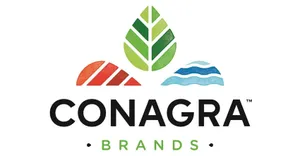Lab Testing for Drying Success
December 9, 2019

The drying step is key to achieving a high-quality product for a variety of process industries. It is vitally important to maintain precise parameters needed to achieve a target moisture. Process variations have the potential to impact the safety and the reliability of the process line, as well as a company’s profitability. Lab testing can help ensure success.
When selecting simple process equipment, like a pump or a fan, it is only necessary to know pressure and flow requirements. But the selection process is far more complicated with thermal processing equipment because there are multiple ways to introduce a product to hot air. Combined with an infinite array of products and processes that depend on thermal processing, with different forms and sizes, finding correlations or empirical equations for every situation is extremely difficult. If product is widely known and the dryer is part of a processing line that has not changed in recent years, the dryer has likely been tested numerous times.
Tests can identify processing challenges and the appropriate technology. If product sticks to the dryer surface, clumps, becomes brittle and breaks, or produces fine dust, lab tests can help the manufacturer design a process that will avoid problems, and help the plant engineers plan equipment needed before and after the dryer.
Tests can examine small amounts of raw or wet product under different temperature, air flow, and air humidity patterns. A test unit should be capable of changing the quantities of initial product, and the experimental data should be able to be scaled up. The test unit should also allow flexibility, to split the process into zones or stages, which will allow process conditions to change in every zone.
Identifying the drying curve is the most important information to gain because it tells how fast a product will dry under very specific conditions. Experiments that change processing conditions help determine the optimal strategy for drying. This is equally important with a new or existing process where testing on a smaller scale would save money on wasted product.
Product development is the most interesting yet most challenging experience and brings many questions. How will the product react to heating, cooling, tempering, humid air, and agitation? How can the product achieve the desired characteristics? Is the test product representative of what can be processed in the production line? The answer to this last question is yes, if the exact same technology is designed for production by a reliable manufacturer. But what if a company acquires an old facility or used equipment and needs to adapt the existing equipment to a new product? In this case, the original equipment manufacturer can provide guidance through small scale testing.
Then there are times when a process must be modified upstream for the drying process. For instance, a drastic change in product formulation, a change in raw materials, or a change in a fundamental upstream process—such as a change in a reactor or a catalyst in the chemical industry��—can dramatically impact the process and cost of the final product. Testing can determine the best way to counteract the negative impacts on the drying process by identifying the variables to change inside the drying process or outside of it. Testing can also simulate changes before they happen, to determine what the impact will be on the process and the product.
For food applications, tests that consider food safety are paramount. Drying, roasting, heating, toasting, and tempering have a direct impact on food stability. In many cases, thermal processing acts as a kill step, destroying potentially harmful microorganisms. Running a test under special conditions, using a surrogate organism identical to the real pathogen in its biological response, can determine the processing conditions--temperature, air velocity, retention time, and thickness of the product-- necessary to achieve a safe process.
From confirming product characteristics and determining precise parameters to scale up, to verifying food safe processing, lab testing is essential. A supplier expert in thermal processing will have knowledge of the widest range of technologies.
Aldo De Tuoni, PE, CEM, is a senior process engineer serving food, feed, and industrial markets. He designs thermal processes for new products and optimizes existing processes from Bühler Aeroglide’s technical laboratories.
Here are articles that may interest you:
The Basics of Drying: An Amalgamation of Science, Technology, and Art
6 Considerations When Choosing an Industrial Dryer
Benefits of Tumble Blenders and Dryers
Algorithms: The Future of Vacuum Drying
You May Also Like


